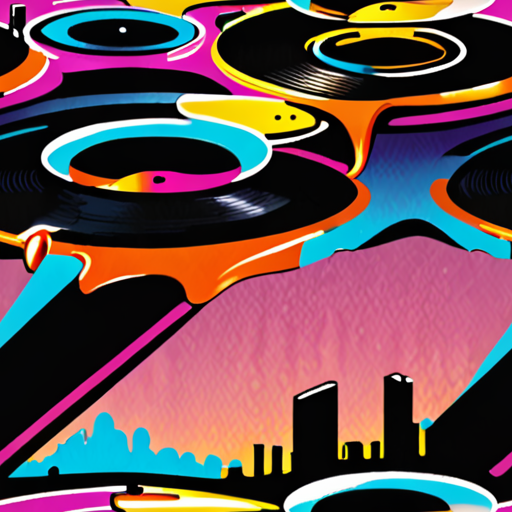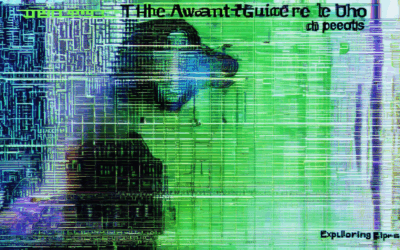As the world of music continues to evolve, one genre has managed to seamlessly blend different styles, creating something entirely new and captivating – hip hop fusion. This unique sound combines the energetic beats and rhythmic flows of hip hop with the soulful melodies and harmonies of jazz, funk, and other genres, resulting in a rich tapestry of sounds that appeal to diverse audiences worldwide.
The fusion of hip hop and other musical styles has given birth to a plethora of sub-genres, each with its own distinct characteristics and flavor. From the smooth, melodic vibes of jazz hip hop fusion to the high-energy, dance-oriented beats of hip hop fusion dance, there’s a style to suit every taste and preference.
But what exactly is hip hop fusion music? How did it come about, and what sets it apart from other genres? And what role does dance play in the evolution of hip hop fusion? These are just some of the questions we’ll explore in this article, delving into the history, cultural significance, and artistic expression of hip hop fusion music and dance.
With its roots deeply embedded in African American culture and its influence extending far beyond the music industry, hip hop fusion has become a powerful force in shaping contemporary art, fashion, and social commentary. As we embark on this journey through the world of hip hop fusion, get ready to discover the fascinating stories behind its creation, the innovative artists pushing its boundaries, and the enduring impact it has had on popular culture.

What is Hiphop Fusion Music?
Hiphop fusion music is a genre that combines elements of hip-hop with various styles of music, often incorporating live instrumentation and improvisation.
-
Origins
The term “hiphop fusion” was first coined in the 1990s to describe the blending of hip-hop with jazz and other forms of music.
-
Characteristics
Hiphop fusion music often features complex rhythms, syncopated beats, and intricate instrumental arrangements.
-
Influences
Hiphop fusion draws inspiration from a variety of musical traditions, including jazz, funk, soul, and classical music.
-
Techniques
Artists may employ a range of techniques, such as sampling, scratching, and turntablism, to create unique sonic textures.
-
-
Subgenres
Within the broader category of hiphop fusion, there are several subgenres, including:
-
Acid Jazz
A style characterized by its use of acid house and jazz samples.
-
Jungle
A high-energy subgenre marked by fast-paced drum patterns and heavy basslines.
-
Drum and Bass
A genre that emphasizes complex drum patterns and basslines, often featuring breakbeat and jazz influences.
-
-
Notable Artists
Some notable artists associated with the hiphop fusion genre include:
-
DJ Shadow
A pioneer of instrumental hip-hop and sample-based music.
-
The Roots
A hip-hop group known for their live instrumentation and eclectic sound.
-
MF DOOM
A rapper and producer celebrated for his innovative approach to hip-hop and jazz fusion.
-
Fusion Dance Style
Fusion dance is a dynamic and expressive style of contemporary social partner dance that seamlessly blends various dance forms to create a unique aesthetic. Unlike traditional dance styles, fusion dance doesn’t adhere to strict definitions, allowing dancers to experiment and innovate freely. Typically, fusion dance employs a lead-follow approach, emphasizing musicality and fluid movement.
Key Characteristics
Some notable characteristics of fusion dance include:
- Blending of diverse dance styles, such as ballet, modern, hip-hop, and ballroom.
- Emphasis on improvisation and creativity.
- Focus on musicality and expression.
- Dynamic and energetic movements.
- Lead-follow approach, often incorporating contact improvisation.
Origins and Evolution
Fusion dance has its roots in the 1960s and 1970s, when dancers began experimenting with combining different styles to create something new and innovative. Over time, fusion dance has evolved to incorporate various influences, including contemporary, hip-hop, and street dance. Today, fusion dance continues to grow and adapt, reflecting the diversity and creativity of its practitioners.
Benefits and Applications
Fusion dance offers numerous benefits, making it an attractive option for dancers of all levels:
- Improves flexibility, strength, and coordination.
- Enhances musicality and expression.
- Fosters creativity and self-expression.
- Develops leadership and communication skills through the lead-follow approach.
- Provides a fun and challenging workout.
Conclusion
Fusion dance is a vibrant and dynamic style that celebrates creativity and self-expression. By blending diverse dance forms and emphasizing musicality, fusion dance offers a unique and captivating experience for dancers and spectators alike. Whether you’re a seasoned dancer or just starting out, fusion dance is an excellent choice for those seeking a fun, challenging, and rewarding dance experience.
Jazz Hip Hop Fusion
Jazz hip hop fusion, also known as jazz rap or jazz hop, is a genre of music that combines elements of jazz and hip hop.
- This fusion emerged in the late 1980s and early 1990s, characterized by its blend of jazz instrumentation, hip hop beats, and often socially conscious lyrics.
- Jazz hip hop fusion draws inspiration from various styles, including acid jazz, bebop, and free jazz, incorporating improvisational elements and complex harmonies.
- The genre has been associated with artists such as A Tribe Called Quest, De La Soul, and The Roots, who have pushed the boundaries of hip hop through their incorporation of jazz elements.
- Jazz hip hop fusion has also influenced contemporary genres, such as trap and drill, which often incorporate jazz samples and chord progressions.
Characteristics of Jazz Hip Hop Fusion
Jazz hip hop fusion is marked by several distinct characteristics:
- Complex rhythms and time signatures, often drawn from jazz traditions
- Improvisational elements, allowing for spontaneous creativity and expression
- Socially conscious lyrics, addressing issues such as racism, inequality, and personal struggle
- Incorporation of jazz instruments, such as saxophones, trumpets, and pianos
Notable Artists and Releases
Some notable artists and releases in the jazz hip hop fusion genre include:
- A Tribe Called Quest – “The Low End Theory” (1991)
- De La Soul – “3 Feet High and Rising” (1989)
- The Roots – “Things Fall Apart” (1999)
- Kendrick Lamar – “To Pimp a Butterfly” (2015)
Impact and Influence
Jazz hip hop fusion has had a significant impact on the development of hip hop and beyond:
- Pushing the boundaries of lyrical complexity and musical experimentation
- Influencing the rise of alternative hip hop and underground scenes
- Informing the sound of contemporary genres, such as trap and drill

What is Hiphop Rooted In?
Hiphop is a dynamic and multifaceted culture that has evolved significantly since its inception in the early 1970s.
- MCing/Rap : The foundation of hiphop lies in MCing, which involves delivering rhythmic speech or rhymes over a beat. This style of expression allows individuals to convey emotions, tell stories, and share experiences through lyrical content.
- DJing/Scratching : DJs play a crucial role in hiphop by selecting and mixing tracks to create seamless transitions between songs. Scratching, a technique developed by Grandmaster Flash, adds an extra layer of creativity and flair to DJ performances.
- Breakdancing : Breakdancing, also known as b-boying or b-girling, emerged as a physical expression of hiphop culture. Dancers showcase intricate footwork, spins, and freezes to the rhythm of the music.
- Graffiti Art/Writing : Graffiti artists use vibrant colors and bold lettering to express themselves and leave their mark on urban landscapes. This visual aspect of hiphop serves as a means of self-expression and communication.
- Knowledge/Culture : As a fifth element, knowledge encompasses the history, philosophy, and values that underpin hiphop culture. It promotes empowerment, consciousness-raising, and social awareness through music and artistic expression.
Hiphop has branched out into various sub-genres, including Abstract Hip Hop, which emphasizes avant-garde production techniques, spoken word, and experimental sounds. This sub-culture offers a unique perspective on the traditional hiphop landscape, pushing boundaries and inspiring innovation.
As a cultural platform, Abstract Hip Hop celebrates the diversity and richness of hiphop, providing a space for artists, writers, and musicians to share their work and connect with like-minded individuals.
By understanding the roots and evolution of hiphop, we can appreciate the complexity and beauty of this dynamic culture, which continues to shape the world of music, art, and entertainment.
What Did Hip-Hop Evolve From?
Hip-hop music has its roots in African American and Latino communities in New York City during the early 1970s.
- The genre evolved from various forms of music, including funk, soul, jazz, blues, and Latin music.
- Breakbeats, which originated from funk and soul records, played a crucial role in the development of hip-hop music.
- Rap lyrics often drew inspiration from social issues, storytelling, and personal experiences, reflecting the struggles and realities faced by urban youth.
Key figures in hip-hop’s early days, such as DJ Kool Herc and Grandmaster Flash, experimented with turntables and developed scratching techniques that laid the foundation for hip-hop’s distinctive sound.
As hip-hop continued to evolve, it incorporated elements from various cultures and musical styles, resulting in diverse sub-genres and regional variations.
From its humble beginnings in the Bronx to its global popularity today, hip-hop remains a dynamic and influential force in modern music and popular culture.

The Father of Hiphop
I’m often asked who the father of hiphop is, and my answer is always the same: DJ Kool Herc.
- DJ Kool Herc is widely credited with inventing hip-hop music in the early 1970s in the Bronx, New York.
- He developed the breakbeat DJing style, which involves extending the instrumental breaks in funk and soul records to create a continuous flow of music that could keep people dancing for hours.
- Herc’s innovative DJing style, combined with his charismatic personality and community outreach efforts, helped to establish hip-hop as a distinct cultural phenomenon.
While other DJs, such as Afrika Bambaataa and Grandmaster Flash, also played important roles in the development of hip-hop, DJ Kool Herc is generally recognized as the founder of the genre.
His legacy continues to inspire new generations of artists, producers, and fans around the world.
The Early Days of Hiphop
In the early days of hip-hop, DJ Kool Herc and his friends would host parties in abandoned buildings and parks in the Bronx, where they would play music and dance together.
- These parties, known as “block parties,” became a central part of hip-hop culture, bringing together people from different backgrounds and neighborhoods to celebrate music, dance, and self-expression.
- At these parties, DJ Kool Herc would extend the breaks in funk and soul records, creating a continuous flow of music that allowed people to dance for hours.
- As the popularity of hip-hop grew, DJ Kool Herc began to develop his own style of DJing, incorporating turntables, mixers, and other equipment to create complex beats and rhythms.
The Impact of DJ Kool Herc
DJ Kool Herc’s impact on hip-hop culture extends far beyond his role as a DJ.
- He was a pioneer in the use of sampling, which involved taking short clips of songs and incorporating them into new tracks.
- He also experimented with MCing, or rapping, and helped to establish the art form as a central part of hip-hop culture.
- Through his music and his community outreach efforts, DJ Kool Herc helped to bring people together and create a sense of unity and purpose among young people in the Bronx.
Conclusion
DJ Kool Herc is widely regarded as the father of hip-hop, and his legacy continues to inspire new generations of artists, producers, and fans around the world.
From his innovative DJing style to his community outreach efforts, DJ Kool Herc played a pivotal role in establishing hip-hop as a distinct cultural phenomenon.
His impact on music, dance, and self-expression continues to be felt today, and his legacy will undoubtedly endure for years to come.




0 Comments